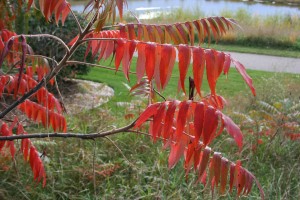Get Your Garden Ready for Winter

Oh, no! Can the garden season really be coming to a close so soon? This week, we’re having slightly warmer temperatures—and happily, some rain!—but the fall is hard upon us and now is the time to start getting your garden ready for winter. This weekend may be the perfect chance.
Here’s some great advice we have culled from experienced gardeners and university sources:
Keep watering! The rain will certainly help, but many parts of Minnesota are still very dry. Make sure any new plantings (especially trees and shrubs) go into winter well watered.
Plant bulbs. You can plant bulbs as long as the ground is not frozen. Mid-October is a fine time to plant them. Just be sure to plant them at the proper depth (the package will tell you what that is) and that they are watered after planting.
Clean up the vegetable garden. We’ve had a couple of hard freezes now, so most vegetable plants that are not under cover are fading. Clean up spent foliage and spread compost over the garden, if you’d like. While this year’s growing season is still fresh in your mind, think about what you would like to grow next year.
Cut back perennials that look bad. Some perennials, such as sedum and coneflowers, look great with snow on them. Leave those standing, but you can save yourself some work in the spring by cutting back the perennials that do not look good. Hostas are on our lists of perennials that benefit from a fall cutback.
Hold off on covering tender plants. Some tender plants (hybrid roses, for example) benefit from winter cover, but hold off on putting down mulch, straw or other cover until after the ground freezes, likely not until December. The real benefit of cover is it prevents the freeze-thaw cycles that damage plants over winter and spring.
Plant spinach. We’re not kidding! The late Bud Markhart, who started our Sustainable Gardening column, wrote about work done by the University of Minnesota Student Organic Farm in a column from 2011. The students planted spinach and lettuce in raised beds late in the fall to produce earlier spring harvests. Here’s what Bud said:
We seeded lettuce and spinach in all beds in November, just before the snow fell. The results this spring were amazing. The raised beds had earlier germination, better stands, and we harvested lettuce and spinach about two weeks ahead of the non-raised beds. Both beds produced great greens before anything we seeded in the spring.
Build garden structures. Now is also a good time to build and fill raised beds, as Bud noted, but also a time to look at your garden and see where you need more structure — trellises, fences, whatever.
For other ideas for fall clean up work, check out Deb Brown’s article from today’s Star Tribune.

